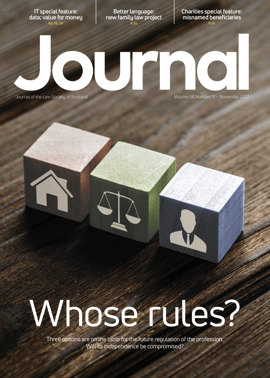Breach of warranty claims: a hot topic

As forensic accountants we are involved in a wide range of commercial and civil disputes and there is often no particular pattern to the frequency of certain types of cases we are instructed in. The natural ebb and flow of instructions might mean you work on more loss of profits cases over a period, followed by an increase in business valuations, which might then be brushed aside by a flurry of unfair prejudice claims by minority shareholders. It keeps things interesting.
However, what has come into focus over the past 18 months or so is the number of breach of warranty disputes we’re seeing. There has been a noticeable increase in post-transaction breach of warranty instructions.
The current landscape
Breach of warranty claims and other post-transaction disputes are certainly not new: they’ve always been around. And the involvement of a forensic accountant is often needed, whether as a formal expert witness in litigation, giving an initial opinion in an advisory role, or in an expert determination capacity.
But it appears the current landscape is lending itself to an increase in such post-transaction disputes.
A buoyant deals market means there are more deals in that post-transaction period when completion accounts are yet to be agreed, earn-out calculations are in play, deferred considerations are up for grabs, and the clock is ticking on the period in which a breach of warranty claim can be intimated. And we’re certainly not in a normal trading period either, if there is such a thing. We have the uncertainty and unpredictability in trading performance caused by the impact of the pandemic, the impact of Brexit, and current supply chain issues to name but a few. With an increased number of deals being done, tension in the market, and an increased likelihood that an acquired company falls short of its trading and profit forecasts, it follows that there is an increased likelihood of deals ending up in dispute.
The recent downturn in many sectors caused by COVID-19 will have resulted in many pre-pandemic assumptions within sellers’ forecasts being incorrect. Buyers who find themselves with an acquired company that is loss making or performing below expectations may seek to recover value from the deal, and one option available to them might be to claim against the warranties given by the sellers. Whether a breach of warranty claim is successful will depend on what has in fact happened, the actual warranties given, and the drafting of the share purchase agreement (SPA) – the devil is in the detail.
Calculation of damages
By way of a brief recap, the remedy in a breach of warranty dispute generally is an award of damages that compensates the claimant (the buyer) by putting it in the position it would have been had the warranties been true. This is generally calculated as the difference between the value of the business at the date of completion as warranted by the seller, and the actual value including the breach: value as warranted against value as is.
Importantly, the nature of any alleged breach, and the value of the alleged breach, need to be properly understood as they can impact the claim in different ways. If the breach relates to a one-off cost, it may impact the claim on a pound for pound basis; however if it relates to an overstatement of the underlying trade and profits, the value of the claim may be based on a multiple of EBITDA (earnings before interest, taxes, depreciation and amortisation), if that was the mechanism upon which the purchase price was calculated.
If it is the latter, it is important to fully understand exactly how the purchase price was arrived at and calculated. Was the pricing structure based on a negotiated and agreed multiple of EBITDA, or was it based on a high-level global offer, negotiation and acceptance? Is there a predetermined multiple that should be applied to the loss? You then have the question of whether the agreed price reflected the true market value of the business as warranted, or did it represent a bad bargain for one of the parties?
Typical areas of claim
There’s no doubt that no two cases are the same, but what we are currently seeing are common themes in the types of claims being made in breach of warranty disputes. Typical or common areas of claim can be in relation to the following:
- stock valuations being overstated;
- debtors being overstated and not recoverable;
- work in progress being overstated;
- creditors not being complete;
- provisions being understated;
- relationships with key customers or suppliers;
- contracts not being up to date;
- breach of laws or regulations;
- the accounts not representing a “true and fair view” of the business.
The above list would most likely contain much the same things before the pandemic as it does now. But customers, suppliers and other counterparties being impacted by the pandemic results in pressure being put on the business, with the result that there is a far greater chance that one, some, or all of the above areas come under increased scrutiny by the buyers when trade tightens after a deal has completed.
The merits of each item being claimed
Giving an opinion on each specific item being claimed and whether it is valid depends on the exact details of each individual amount. One of the fundamental things to keep in mind is the date of completion and whether the issue in question was then known by the sellers, or whether the benefit of hindsight has been used when constructing the claim.
Below are some examples of where claims might be open to challenge:
- What was known about at the date of completion? A claim based on a debtor balance that was understood to be good at completion date but subsequently became unrecoverable due to the debtor going into liquidation some months later is likely to be open to challenge based on the use of hindsight.
- Items specifically covered in the disclosure letter pre-completion: Where something like slow-moving stock has been identified by the sellers in the disclosure letter and has been assigned a value, claims by the buyer over such stock are going to be challenged.
- Lack of supporting evidence: As basic as it sounds, if there are claims for costs that the buyers say they have had to incur, their robustness is strengthened by third party evidence of the value of the costs, and that they have had to be paid.
- Double counting between claims: claiming both that a provision (liability) for unrecovered work in progress is understated by a certain value, and that the work in progress balance (asset) is overstated by the same value, results in an alleged breach being double counted: you shouldn’t be claiming for both.
- Accounting policies under “true and fair” accounts: Claiming that the accounts upon which the completion price was based are not “true and fair”. This has been seen when the buyer changes the accounting policy of the acquired business post-completion to align with its own accounting policy and there is an impact on reported profits. Before pursuing such a claim you should check what accounting policies were disclosed as part of the due diligence process, were included in the disclosure letter pre-completion, or were contained within the SPA. There’s also the question of generally accepted accounting policies, materiality, and the auditor’s view on whether the accounts were true and fair.
The merits of each element of a claim need to be considered carefully, including the calculation and quantum; the veracity of the underlying financial records, data and evidence; the accounting aspects; and not forgetting its context in accordance with the SPA and the warranties.
Looking forwards
With the inclusion of specific COVID-19 warranties now appearing in SPAs, might there be further grounds for claims on the horizon? Taking furlough claims as an example, how sure can sellers be that their furlough claims were accurate and not open to challenge from HMRC? Time will tell.
The pandemic and recent events have created a very unpredictable market, yet there is still a buoyant and active deals market. It is unlikely that we are going to see a drop in the number of deals that end in dispute, not in the near future anyway.
Regulars
Perspectives
Features
Briefings
In practice
Online exclusive
In this issue
- Good legal software suppliers listen to you
- The trends that will shape law firms in 2022
- Technology won't solve everything...
- Key trends in legal tech adoption for UK law firms
- The top 4 benefits of moving to a cloud solution
- Why cyber risk management is not the same as IT support
- Business growth: finding the right package






